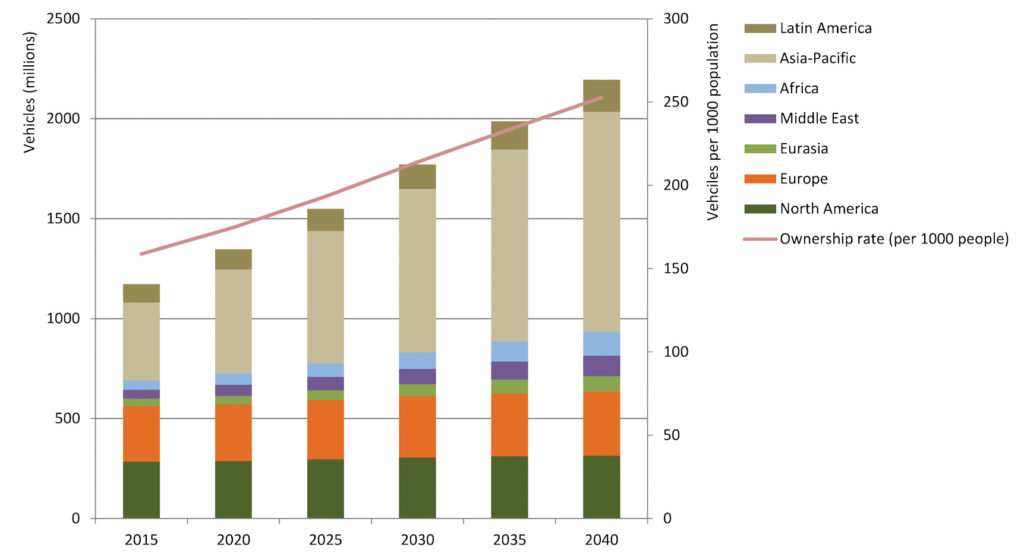A Global Roadmap for Autogas
Meeting the growing demand for mobility
The demand for mobility – of people and goods – is rising inexorably across the world as the population grows and people get richer. Most of this demand takes the form of road transport: two- and three-wheelers and passenger cars to move people and commercial vans and trucks to move goods. And unless the economy collapses, demand for road transport will keep on rising for the foreseeable future.
There is a close correlation between the size of the global economy, the total distance travelled by road vehicles and the amount of energy they consume. Most of the increase in road transport is occurring and will continue to occur in the emerging economies of Asia, Africa and Latin America, where population and economic activity are expanding most rapidly (Figure 1).
“Vehicle ownership rates in the emerging economies are still far below the saturation point reached in most of the advanced economies, pointing to further strong growth in the global vehicle fleet over the coming decades.”
Figure 1: World energy consumption for road transport by country/region and gross domestic product

This points to further strong growth in the fleets in those countries over the coming decades as their populations grow and the income gap with the advanced economies narrows further. The latest long-term projections from the International Energy Agency show the global fleet rising by half by 2030 and by 87% by 2040, with most of the growth coming from Asia, Latin America, Africa and the Middle East (Figure 2). Vehicle ownership per 1000 people is projected to climb by 76% from 159 in 2015 to 280 in 2050.
Figure 2: World fleet of road vehicles by major region in the IEA Reference Technology Scenario

Meeting the growth in demand for road transport mobility will require more energy. Cars and trucks have been getting more efficient over the years, but the pace of improvement in fuel economy has never been fast enough to offset the underlying growth in demand for mobility.
Average fuel economy of light-duty vehicles (LDVs, including passenger cars and vans) improved by around 1.2% per year between 2005 and 2015, taking account of changes in the size and configuration of the fleet (GFEI, 2018). Over the same period, global road fuel consumption grew by more than 2% per year.
“Air pollution is the “new tobacco”. 97% of cities in low and middle income countries, and almost half in high-income countries, fail to meet the Air Quality Guidelines of the World Health Organization.”
